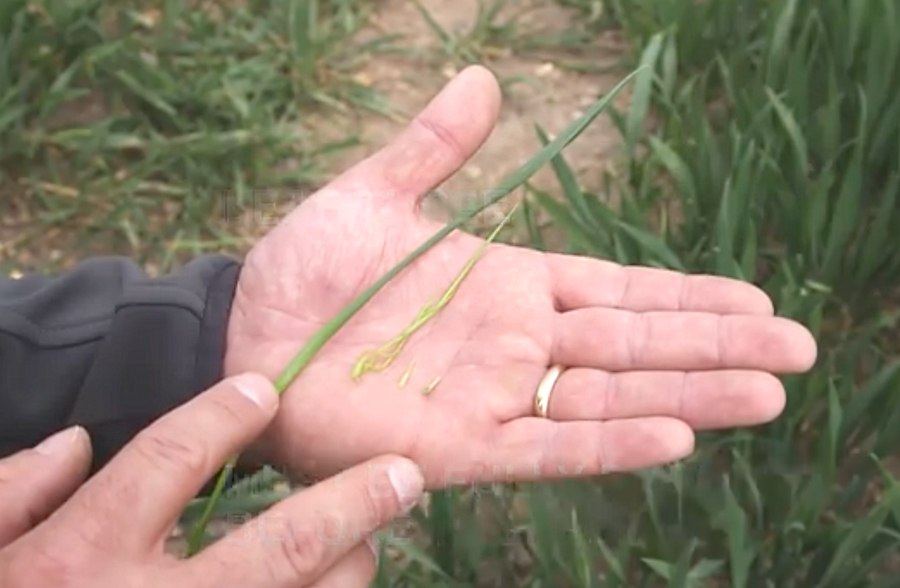Care needed with backward plant dissection
29th April 2021
Growers are being urged to take great care with plant dissection ahead of T1 sprays this season.

Leaves 1, 2 and 3 after dissection
Backward crops mean some leaves are just a few millimetres long, making final leaf 3 emergence particularly challenging. Bayer’s Ben Giles needed optics to help with leaf identification when checking trial plots with D J Tebbit Farms manager Russell McKenzie. “With the flag leaf and leaf 2 just a few millimetres long in a number of varieties it makes true leaf identification tricky. What might look like leaf 3 could be leaf 4 with leaf 3 still to unfold. Getting it wrong means leaf 3 will be left unprotected and the risk of disease spreading up the plant.”
The benefit of those backward plants is that disease symptoms are light, with yellow rust only bubbling up in some susceptible varieties. That is been borne out in Bayer National Disease Snapshot. The company is using qPCR technology under its Rapid Disease Detection initiative to track Septoria and yellow rust across various varieties with fifteen farmers across the UK and Ireland.
“We saw Septoria and yellow rust levels increase through February and March – this peaked with a Septoria DNA pg score of 21.857 in a September drilled crop of Sundance. But the cool, breezy conditions over the last few weeks have reduced canopy humidity and as newer leaves have emerged so disease levels have fallen back for both diseases across all sites.”
For him it means rate is answer to meet a range of drilling dates, variety disease ratings and disease scenarios. “Even at its minimum rate of 1.0 l/ha Ascra is still delivering a 65% dose of azole and combined with two SDHIs strong Septoria protection. And it means tebuconazole can be added for rapid yellow rust eradication in an economical package,” he concludes.
